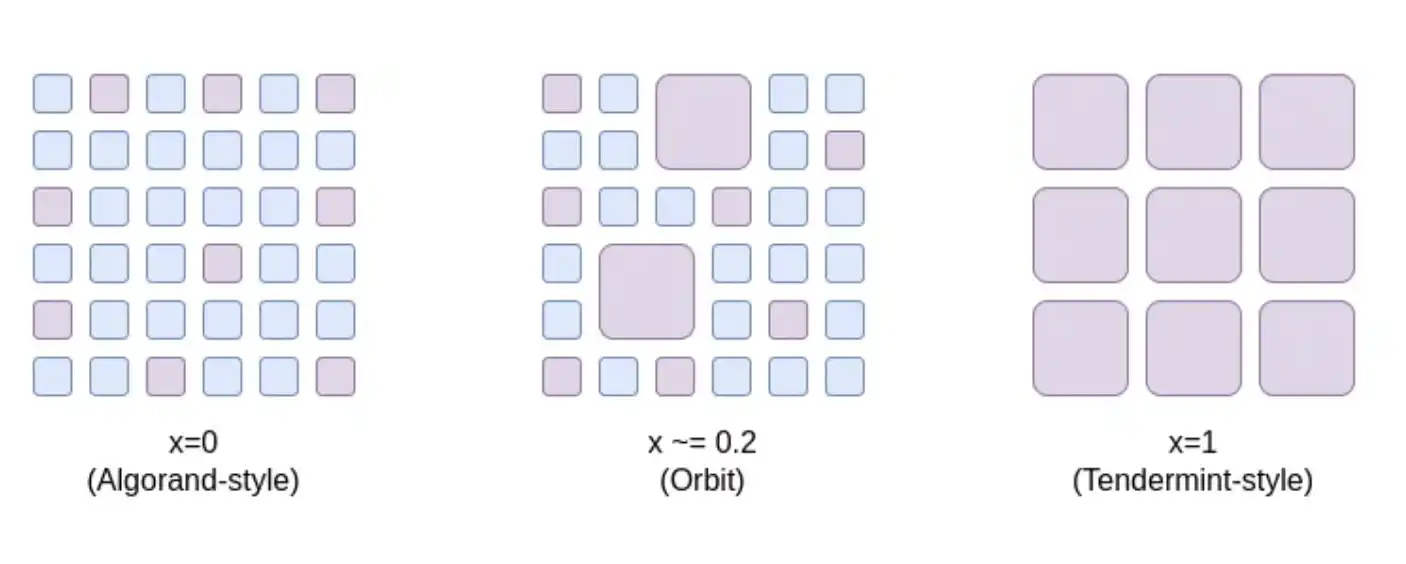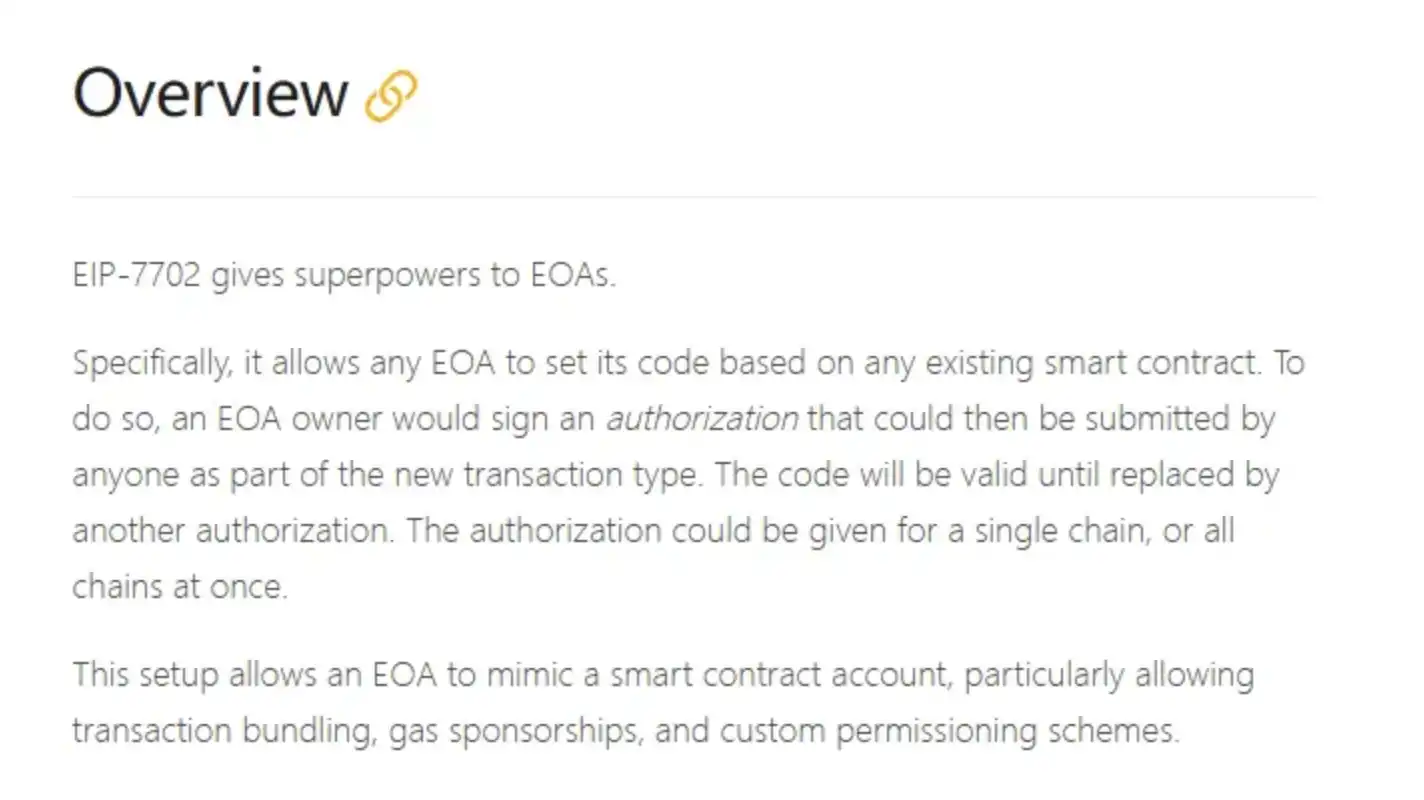Original Title: "Three Key Highlights of the Ethereum Pectra Upgrade"
Original Source: Ebunker
On May 7, Ethereum successfully completed the Pectra upgrade. As a significant mainnet upgrade this year, Pectra lays a new foundation for Ethereum's future development, focusing on three main areas: Staking, L2 scaling, and account abstraction. Below are the core highlights of this upgrade.
1. Staking Mechanism Optimization: From 32 ETH to 2048 ETH
In this upgrade, EIP-7251 raised the staking limit for a single validator node from 32 ETH to 2048 ETH, which brings two important implications:
1. Improved Staking Deposit and Withdrawal Speed
In the past, Ethereum set the single-node staking limit at 32 ETH to maintain decentralization. However, this also led to long queue times for deposits and withdrawals during network peak periods, especially since only 8 nodes are allowed to exit or withdraw per Epoch. This upgrade increases the single-node limit to 2048 ETH, which will significantly enhance the efficiency of fund flow after node consolidation in the future, especially during bull markets, effectively alleviating queue pressure. Although currently, during low periods, deposits and withdrawals can generally be completed within 10 minutes, this change will lay a solid foundation for future network congestion and optimize the overall user experience.
2. Reserving Space for L1 Scaling
Ethereum currently has over a million validator nodes, and under the mechanism that ensures fair participation in consensus for each node, the peak performance of L1 has long been limited, currently maintaining around 60 TPS. After raising the single-node staking limit to 2048 ETH, it is expected that a more flexible layered consensus mechanism can be gradually introduced in the future, such as a combination model of full voting by large nodes and random voting by small nodes. This plan aims to slightly lower the security threshold while significantly releasing on-chain performance, laying the groundwork for L1 scalability.

As shown in the figure, adopting the Orbit model may be a way to scale ETH L1. For this reason, promoting the 2048 ETH limit in the Pectra upgrade is a key step in the scaling path.
3. Benefits for LST Protocols
The introduction of EIP-6110 and EIP-7002 in the Pectra upgrade provides groundbreaking support for LST protocols, including Lido and EtherFi:
· EIP-6110 allows deposit operations to be completed directly on the consensus layer.
· EIP-7002 grants smart contracts control over the withdrawal process.
These two changes enable certain processes that originally relied on centralized components and manual workflows to achieve a higher degree of decentralization and automation. Although discussions around LST remain controversial, the Pectra upgrade undoubtedly releases greater development space for this ecosystem.
2. L2 Optimization: Blob Scaling Brings Lower Costs
In this upgrade, the implementation of EIP-7742 and EIP-7691 directly doubles the Blob capacity and supports dynamic adjustments. As the core area for L2 data storage and backup, Blob directly affects the cost structure of L2. After this upgrade, L2 fees will further decrease, moving from "very cheap" to "extremely cheap," which is undoubtedly a positive for the L2 ecosystem.

Of course, this also means that the burning rate of ETH may further slow down. However, from the perspective of the overall health of the ecosystem, the activity and low costs of L2 undoubtedly have more long-term strategic value.
3. Account Abstraction Takes a Key Step

The introduction of EIP-7702 opens a new chapter for Ethereum account abstraction, significantly enhancing wallet flexibility and user experience:
· Supports batch transactions, making operations more efficient.
· Allows the use of any token (such as USDT) to pay Gas, lowering the threshold.
· Introduces mechanisms like social recovery, enhancing account security and usability.
In the past, wallet functions were relatively fixed, and ETH had to be prepared in advance to initiate transactions. In the future, account abstraction wallets based on EIP-7702 will be more free and intelligent, allowing new users to register and use wallets directly through their phone numbers, without worrying about address management and Gas pre-setup, completely bridging the "last mile" of the Ethereum experience.
Conclusion
The Pectra upgrade is not just a routine functional iteration; it paints a clearer path for Ethereum's future in key areas such as Staking mechanism optimization, L2 scaling, and account abstraction. Ebunker has completed all adaptations for the Pectra upgrade, and we will continue to focus on providing efficient and stable validation services for the Ethereum ecosystem. Future changes will continue to occur, and we thank you for your attention, participation, and contribution to building the Ethereum ecosystem.
This article is from a submission and does not represent the views of BlockBeats.
免责声明:本文章仅代表作者个人观点,不代表本平台的立场和观点。本文章仅供信息分享,不构成对任何人的任何投资建议。用户与作者之间的任何争议,与本平台无关。如网页中刊载的文章或图片涉及侵权,请提供相关的权利证明和身份证明发送邮件到support@aicoin.com,本平台相关工作人员将会进行核查。



